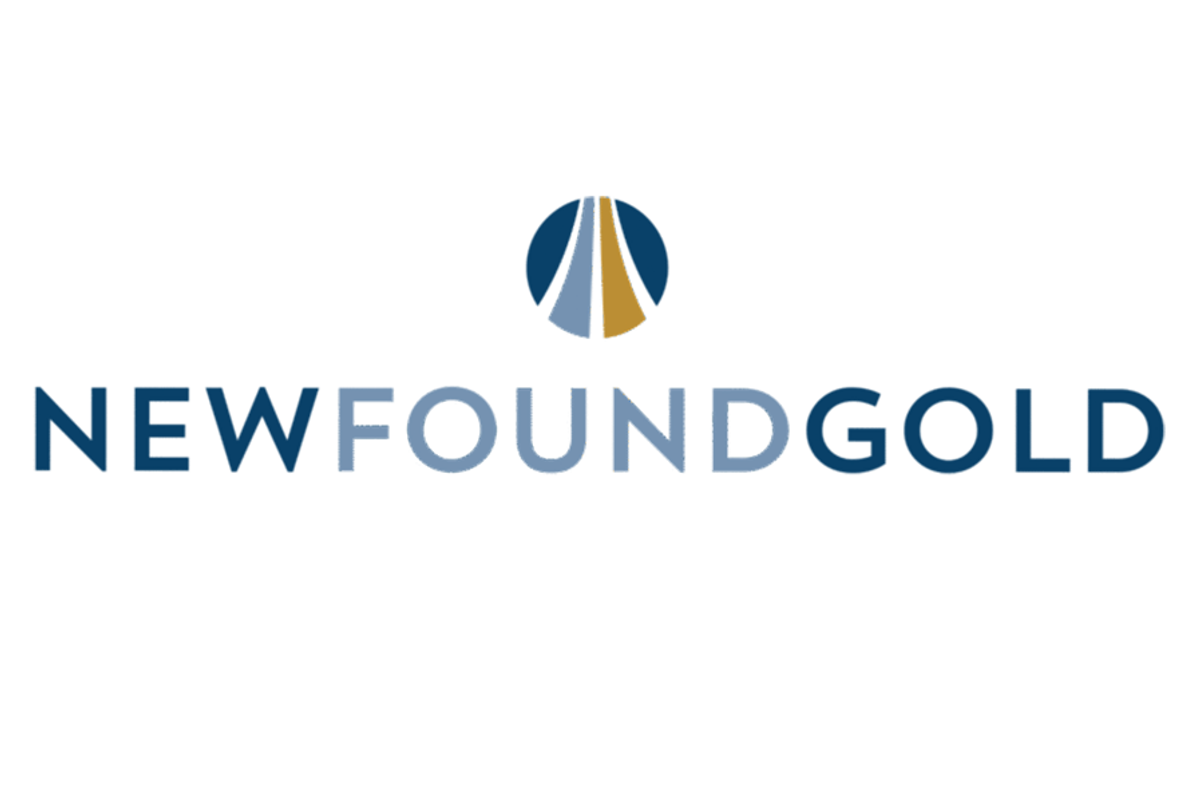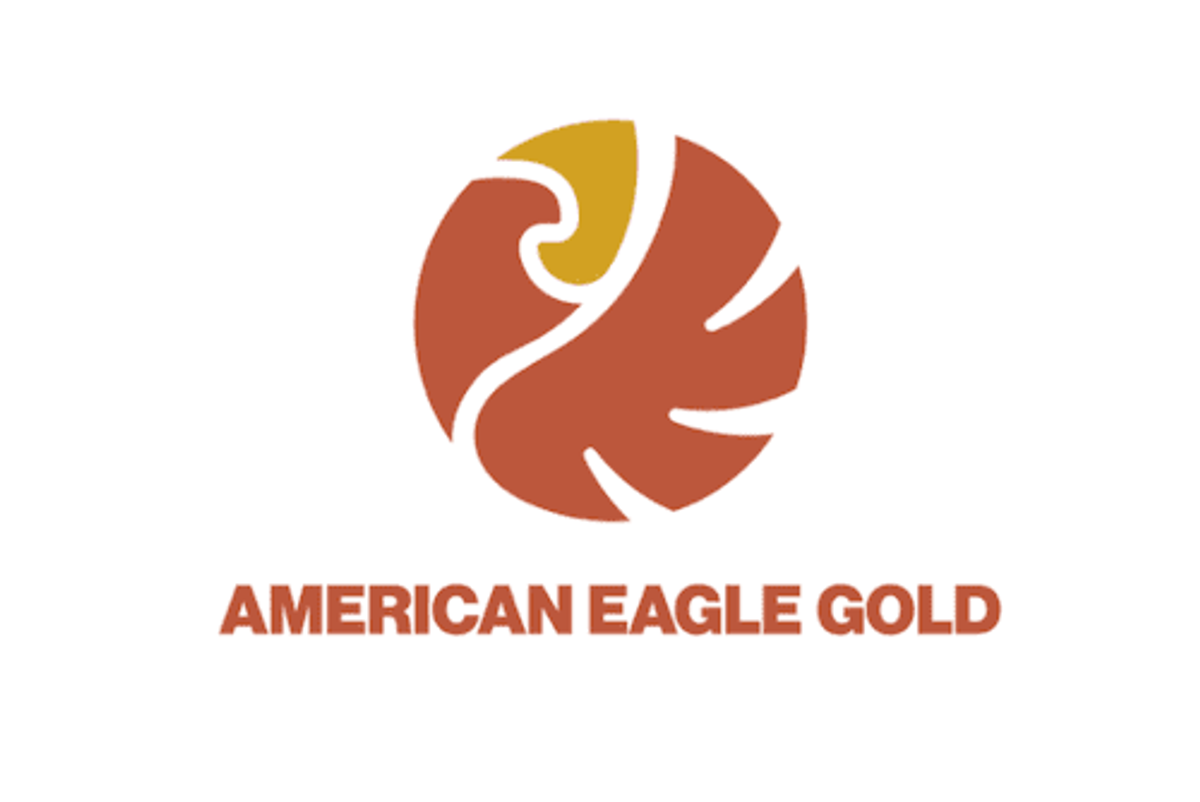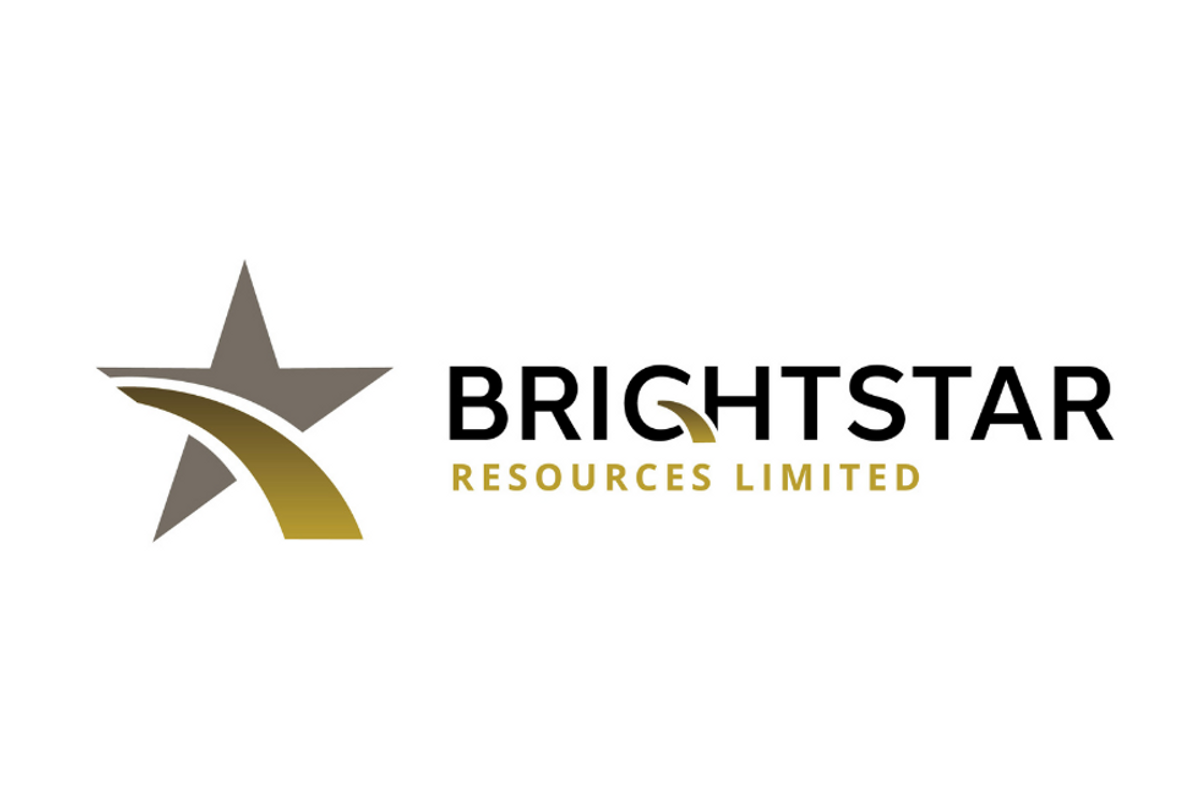
April 23, 2025
Maritime Resources Corp. (TSXV: MAE) (OTC Pink: MRTMF) ("Maritime" or the "Company") is pleased to announce final drill results from a grade control drill program at the Hammerdown Gold Project. Hammerdown is located in the Baie Verte mining district of Newfoundland and Labrador, near the towns of King's Point and Springdale.
Highlights:
- 49.4 grams per tonne ("gpt") gold ("Au") over 2.6 metres ("m"), including 153.9 gpt Au over 0.6 m in drill hole HDGC-25-235
- 94.5 gpt Au over 0.2 m in drill hole HDGC-25-265
- 25.8 gpt Au over 0.8 m, including 90.5 gpt Au over 0.2 m in drill hole HDGC-25-251
- 12.3 gpt Au over 1.0 m, including 38.3 gpt Au over 0.3 m in drill hole HDGC-25-244
- 5.1 gpt Au over 11.7 m in drill hole HDGC-25-241 in backfill material
Garett Macdonald, President and CEO of Maritime comments, "The final set of drill results from the grade control drilling program cover the Rumbullion zone, an area of narrow high grade quartz veins approximately 300 m east of the core of the Hammerdown deposit. The grade control drilling program has demonstrated high grade gold mineralization at surface, the position of the historic mine workings, as well as the presence of gold mineralization within the backfilled stopes. Conclusion of the grade control program marks the successful achievement of another important de-risking step for the development of the Hammerdown Gold Project."
Discussion of Results
The Rumbullion zone, located approximately 300 m east of the core Hammerdown deposit, is interpreted as an eastern extension of the same mineralized system. It is characterized by a noticeable change in the orientation of the deposit to a SW-NE trend. Mineralization in the Rumbullion area is comprised of steeply dipping, shear-hosted quartz veins with associated sulfide and gold mineralization. While portions of the zone were historically mined by Richmont Mines between 2000-2004, significant areas remain underdeveloped. Recent drilling focused on this zone to improve definition and support future mine planning.
Notable assay results include drill hole HDGC-25-235 which returned 49.4 gpt Au over 2.6 m, including 153.9 gpt Au over 0.6 m, followed by a second lower vein and shear zone intersection returning 5.4 gpt Au over 1.2 m, including 23.2 gpt Au over 0.2 m. This drill hole is located in close proximity to the historic underground mine workings and is representative of the style and grade of mineralization that was historically mined in the area. Drill hole HDGC-25-235 is located 11 m west of previously reported hole HDGC-25-231 which returned 27.8 gpt Au over 0.9 m (Maritime press release dated March 14, 2025). The intersection in hole HDGC-25-231 was significantly narrower than that in hole HDGC-25-235, due to faulting observed along the vein contact.
Other notable results include 25.8 gpt Au over 0.8 m, including 90.5 gpt over 0.2 m in drill hole HDGC-25-251, 12.3 gpt Au over 1.0 m, including 38.3 gpt over 0.3 m in drill hole HDGC-25-244 and 14.0 gpt Au over 0.7 m, including 43.6 gpt over 0.2 m in drill hole HDGC-25-237. These three intersections are located approximately 20 m south of the historic mine development and are examples of the high-grade veins that were left unmined by previous operators due to the lower gold prices which resulted in higher historic mine cut-off grade at the time.
In addition, drill hole HDGC-25-241 intersected 5.1 gpt Au over 11.7 m within backfilled stope material. The presence of gold in this material highlights the potential for additional recoveries from historically mined areas and could enhance early-stage production plans. The potential quantity and grade are conceptual in nature and there has been insufficient exploration to define a mineral resource. It is uncertain whether further exploration would result in the backfill material being delineated as a mineral resource.
Grade Control Drilling
The grade control drill program completed 8,460 m of diamond drilling in 273 drill holes. The program was designed to intersect the sub vertical mineralization on a 10 m x 10 m staggered pattern to maximize future ore extraction while minimizing ore losses and dilution.

Figure 1. Plan View
To view an enhanced version of this graphic, please visit:
https://images.newsfilecorp.com/files/4548/249404_adae02a384bdda7d_001full.jpg

Figure 2. Hammerdown Deposit Cross Section
To view an enhanced version of this graphic, please visit:
https://images.newsfilecorp.com/files/4548/249404_adae02a384bdda7d_002full.jpg

Figure 3. Oblique View of Historic Hammerdown Mine Workings Depicting the location of the Rumbullion Zone
To view an enhanced version of this graphic, please visit:
https://images.newsfilecorp.com/files/4548/249404_adae02a384bdda7d_003full.jpg
Table 1. Assay Results
| Hole | From | To | Length | Au gpt | Comments |
| HDGC-25-198 | 3.7 | 3.9 | 0.2 | 41.3 | |
| HDGC-25-198 | 11.0 | 11.5 | 0.6 | 20.5 | |
| HDGC-25-200 | 7.9 | 8.6 | 0.7 | 1.9 | |
| HDGC-25-200 | 20.9 | 23.3 | 2.4 | 1.9 | |
| HDGC-25-200 | 30.3 | 30.5 | 0.2 | 21.9 | |
| HDGC-25-202 | 9.5 | 10.0 | 0.5 | 7.4 | |
| HDGC-25-202 | 15.6 | 15.8 | 0.2 | 9.3 | |
| HDGC-25-204 | 1.4 | 1.6 | 0.2 | 9.5 | |
| HDGC-25-208 | 2.9 | 5.8 | 2.9 | 1.7 | |
| HDGC-25-211 | 2.4 | 2.6 | 0.2 | 10.2 | |
| HDGC-25-211 | 6.2 | 7.0 | 0.8 | 1.9 | |
| HDGC-25-217 | 5.5 | 5.8 | 0.3 | 25.5 | |
| HDGC-25-218 | 3.5 | 5.0 | 1.5 | 2.2 | |
| HDGC-25-219 | 12.0 | 12.3 | 0.3 | 5.8 | |
| HDGC-25-221 | 9.8 | 11.0 | 1.2 | 6.0 | |
| HDGC-25-222 | 13.0 | 22.1 | 9.1 | 0.8 | |
| HDGC-25-226 | 4.0 | 8.0 | 4.0 | 1.6 | |
| Including | 5.7 | 5.9 | 0.2 | 13.3 | |
| HDGC-25-227 | 13.2 | 13.4 | 0.2 | 39.8 | |
| HDGC-25-235 | 6.8 | 9.4 | 2.6 | 49.4 | |
| Including | 6.8 | 7.4 | 0.6 | 153.9 | |
| HDGC-25-235 | 12.4 | 12.6 | 0.2 | 3.8 | |
| HDGC-25-235 | 18.5 | 19.7 | 1.2 | 5.4 | |
| Including | 19.0 | 19.2 | 0.2 | 23.2 | |
| HDGC-25-237 | 12.3 | 13.0 | 0.7 | 14.0 | |
| HDGC-25-240 | 10.4 | 11.0 | 0.6 | 0.8 | |
| HDGC-25-241 | 12.3 | 12.5 | 0.2 | 9.7 | |
| HDGC-25-241 | 28.2 | 39.9 | 11.7 | 5.1 | Backfill |
| HDGC-25-242 | 14.8 | 15.1 | 0.3 | 54.8 | |
| HDGC-25-242 | 27.0 | 27.1 | 0.2 | 18.8 | |
| HDGC-25-243 | 12.3 | 13.0 | 0.7 | 4.6 | |
| HDGC-25-243 | 19.3 | 19.6 | 0.3 | 4.7 | |
| HDGC-25-244 | 10.0 | 11.0 | 1.0 | 12.3 | |
| Including | 10.4 | 10.7 | 0.3 | 38.3 | |
| HDGC-25-247 | 13.2 | 13.9 | 0.7 | 4.8 | |
| HDGC-25-247 | 16.5 | 16.8 | 0.2 | 5.3 | |
| HDGC-25-247 | 20.8 | 21.0 | 0.2 | 1.5 | |
| HDGC-25-249 | 11.2 | 11.9 | 0.7 | 22.5 | |
| HDGC-25-251 | 13.4 | 14.2 | 0.8 | 25.8 | |
| Including | 13.4 | 13.6 | 0.2 | 90.5 | |
| HDGC-25-253 | 4.7 | 6.0 | 1.3 | 5.4 | |
| Including | 5.2 | 5.7 | 0.5 | 12.8 | |
| HDGC-25-254 | 7.3 | 8.1 | 0.8 | 4.4 | |
| Including | 7.8 | 8.1 | 0.3 | 10.2 | |
| HDGC-25-259 | 4.5 | 5.4 | 0.9 | 9.3 | |
| HDGC-25-263 | 11.7 | 12.3 | 0.5 | 9.8 | |
| HDGC-25-264 | 5.8 | 7.3 | 1.5 | 1.0 | |
| HDGC-25-265 | 8.5 | 8.7 | 0.2 | 94.5 | |
| HDGC-25-266 | 4.6 | 4.8 | 0.2 | 17.6 |
Lengths reported relative to core access are estimated to be approximately 70% true thickness
Table 2. Drill Hole Data
| Drillhole ID | Easting | Northing | Elevation | Total Length | Azimuth | Dip |
| HDGC-25-198 | 554930.3 | 5489083.9 | 193.6 | 19.0 | 180.0 | -60 |
| HDGC-25-200 | 554940.5 | 5489081.3 | 194.7 | 34.0 | 180.0 | -60 |
| HDGC-25-202 | 554940.0 | 5489088.8 | 194.8 | 19.0 | 180.0 | -60 |
| HDGC-25-204 | 554930.5 | 5489075.7 | 193.9 | 22.0 | 180.0 | -45 |
| HDGC-25-208 | 554950.4 | 5489084.5 | 195.0 | 19.0 | 180.0 | -60 |
| HDGC-25-211 | 554920.4 | 5489069.2 | 195.5 | 13.0 | 180.0 | -60 |
| HDGC-25-217 | 554950.8 | 5489066.0 | 197.1 | 19.0 | 180.0 | -60 |
| HDGC-25-218 | 554960.3 | 5489060.9 | 197.1 | 7.0 | 180.0 | -60 |
| HDGC-25-219 | 554940.6 | 5489012.3 | 199.9 | 14.0 | 180.0 | -60 |
| HDGC-25-221 | 554930.0 | 5489006.7 | 198.5 | 14.0 | 180.0 | -60 |
| HDGC-25-222 | 554920.2 | 5489020.9 | 198.5 | 32.0 | 180.0 | -60 |
| HDGC-25-226 | 554920.5 | 5489011.1 | 198.7 | 16.0 | 180.0 | -60 |
| HDGC-25-227 | 554939.8 | 5489021.5 | 199.5 | 19.0 | 180.0 | -60 |
| HDGC-25-235 | 555130.3 | 5489037.0 | 199.9 | 26.0 | 180.0 | -60 |
| HDGC-25-237 | 555130.0 | 5489017.0 | 200.7 | 14.0 | 180.0 | -60 |
| HDGC-25-240 | 555109.4 | 5489067.2 | 198.6 | 29.0 | 180.0 | -60 |
| HDGC-25-241 | 555110.1 | 5489056.8 | 199.1 | 47.0 | 180.0 | -60 |
| HDGC-25-242 | 555110.0 | 5489037.3 | 199.8 | 29.0 | 180.0 | -60 |
| HDGC-25-243 | 555110.1 | 5489027.5 | 200.4 | 20.0 | 180.0 | -60 |
| HDGC-25-244 | 555110.2 | 5489017.7 | 200.9 | 20.0 | 180.0 | -60 |
| HDGC-25-247 | 555100.8 | 5489051.0 | 199.9 | 32.0 | 182.0 | -60 |
| HDGC-25-249 | 555100.8 | 5489031.5 | 200.7 | 17.0 | 180.0 | -60 |
| HDGC-25-251 | 555100.2 | 5489013.8 | 201.3 | 17.0 | 180.0 | -60 |
| HDGC-25-253 | 555090.0 | 5489048.2 | 201.3 | 17.0 | 180.0 | -60 |
| HDGC-25-254 | 555090.4 | 5489038.8 | 201.2 | 14.0 | 180.0 | -60 |
| HDGC-25-259 | 555080.2 | 5489091.8 | 197.8 | 17.0 | 180.0 | -60 |
| HDGC-25-263 | 554969.9 | 5489065.1 | 196.7 | 16.0 | 180.0 | -60 |
| HDGC-25-264 | 554980.5 | 5489062.5 | 196.8 | 10.0 | 180.0 | -60 |
| HDGC-25-265 | 554979.4 | 5489069.3 | 196.1 | 19.0 | 180.0 | -60 |
| HDGC-25-266 | 554989.3 | 5489066.0 | 197.9 | 10.0 | 180.0 | -60 |
Qualified Person
Exploration activities at the Hammerdown Gold Project are administered on site by the Company's Exploration Manager, Larry Pilgrim, P.Geo. In accordance with National Instrument 43-101 Standards of Disclosure for Mineral Projects, Larry Pilgrim, P.Geo. Exploration Manager, is the Qualified Person for the Company and has prepared, validated and approved the technical and scientific content of this news release. The Company strictly adheres to CIM Best Practices Guidelines in conducting, documenting, and reporting its exploration activities on its exploration projects.
Analytical Procedures
All samples assayed and pertaining to this press release were completed by Eastern Analytical Limited (EAL) located at Springdale, Newfoundland and Labrador. EAL is an ISO 17025:2005 accredited laboratory for a defined scope of procedures. EAL has no relationship to Maritime Resources. Drill core samples are collected from NQ sized diamond drill core and sawn in half. The half core samples are delivered in sealed plastic bags to EAL by Maritime field crews where they are dried, crushed, and pulped. Samples are crushed to approximately 80% passing a minus 10 mesh and split using a riffle splitter to approximately 250 grams. A ring mill is used to pulverize the sample split to 95% passing a minus 150 mesh. Sample rejects are securely stored at the EAL site for future reference. A 30-gram representative sample is selected for analysis from the 250 grams after which EAL applies a fire assay fusion followed by acid digestion and analysis by atomic absorption for gold analysis. Other metals were analyzed by applying an acid digestion and 34 element ICP analysis finish. EAL runs a comprehensive QA/QC program of standards, duplicates and blanks within each sample stream.
About Maritime Resources Corp.
Maritime (TSXV: MAE) (OTC Pink: MRTMF) is a gold exploration and development company focused on advancing the Hammerdown Gold Project in the Baie Verte District of Newfoundland and Labrador, a top tier global mining jurisdiction. Maritime holds a 100% interest directly and subject to option agreements entitling it to earn 100% ownership in the Green Bay Property which includes the former Hammerdown gold mine and the Orion gold project. Maritime controls over 439 km2 of exploration land including the Green Bay, Whisker Valley, Gull Ridge and Point Rousse projects. Mineral processing assets owned by Maritime in the Baie Verte mining district include the Pine Cove mill and the Nugget Pond gold circuit.
On Behalf of the Board:
Garett Macdonald, MBA, P.Eng.
President and CEO
Phone: (416) 365-5321
info@maritimegold.com
www.maritimeresourcescorp.com
Twitter
Facebook
LinkedIn
YouTube
Caution Regarding Forward-Looking Statements:
Certain of the statements made and information contained herein is "forward-looking information" within the meaning of National Instrument 51-102 – Continuous Disclosure Obligations. Forward-looking statements are often identified by terms such as "will", "may", "should", "anticipate", "expects", "intends", "indicates" "plans" and similar expressions. Forward-looking statements include, but are not limited to, statements concerning the Hammerdown mineralization, its' metallurgical response, precious metal extraction based on the ongoing metallurgical testwork, sampling programs, the grade control drilling program, location and grade of underground workings and backfill material, amongst other things, which involve known and unknown risks, uncertainties and other factors which may cause the actual results, performance or achievements of the Company, or industry results, to be materially different from any future results, performance or achievements expressed or implied by such forward-looking information. All forward-looking statements and forward-looking information are based on reasonable assumptions that have been made by the Company in good faith as at the date of such information. Such assumptions include, without limitation, the price of and anticipated costs of recovery of, base metal concentrates, gold and silver, the presence of and continuity of such minerals at modeled grades and values, the capacities of various machinery and equipment, the use of ore sorting technology will produce positive results, the availability of personnel, machinery and equipment at estimated prices, mineral recovery rates, and others. Forward-looking information is subject to a variety of risks and uncertainties which could cause actual events or results to differ from those reflected in the forward-looking information, including, without limitation, the ability of the Company to continue to be able to access the capital markets for the funding necessary to acquire, maintain and advance exploration properties or business opportunities; global financial conditions, including competition within the industry to acquire properties of merit or new business opportunities, and competition from other companies possessing greater technical and financial resources; difficulties in advancing towards a development decision and executing exploration programs on the Company's proposed schedules and within its cost estimates, whether due to weather conditions, availability or interruption of power supply, mechanical equipment performance problems, natural disasters or pandemics in the areas where it operates; increasingly stringent environmental regulations and other permitting restrictions or maintaining title or other factors related to exploring of its properties, such as the availability of essential supplies and services; factors beyond the capacity of the Company to anticipate and control, such as the marketability of mineral products produced from the Company's properties; uncertainty as to whether mineral resources will ever be converted into mineral reserves once economic considerations are applied; uncertainty as to whether inferred mineral resources will be converted to the measured and indicated categories through further drilling, or into mineral reserves, once economic considerations are applied; government regulations relating to health, safety and the environment, and the scale and scope of royalties and taxes on production; and the availability of experienced contractors and professional staff to perform work in a competitive environment and the resulting adverse impact on costs and performance and other risks and uncertainties, including those described in each MD&A of financial condition and results of operations. In addition, forward-looking information is based on various assumptions including, without limitation, assumptions associated with exploration results and costs and the availability of materials and skilled labour. Should one or more of these risks and uncertainties materialize, or should underlying assumptions prove incorrect, actual results may vary materially from those described in forward-looking statements. Accordingly, readers are advised not to place undue reliance on forward-looking information. Except as required under applicable securities legislation, Maritime undertakes no obligation to publicly update or revise forward-looking information, whether as a result of new information, future events or otherwise.
Neither the TSX Venture Exchange ("TSX-V") nor its Regulation Services Provider (as that term is defined in the policies of the TSX-V) accepts responsibility for the adequacy or accuracy of this release.
MAE:CA
The Conversation (0)
12 November
Maritime Announces First Gold from Hammerdown
Maritime Resources Corp. (TSXV: MAE,OTC:MRTMD) (OTCID: MRTMF) ("Maritime" or the "Company") is pleased to announce the first gold pour from its Hammerdown Gold Project ("Hammerdown" or the "Project") at the Company's Pine Cove mill ("Pine Cove"). Hammerdown and Pine Cove are located in the Baie... Keep Reading...
07 November
Maritime Resources Corp. Discloses Disposition of Common Shares of Emperor Metals Inc.
This press release is being disseminated pursuant to Multilateral Instrument 62-104 - Take-Over Bids and Issuer Bids and National Instrument 62-103 - The Early Warning System and Related Take-Over Bid and Insider Reporting Issues.Maritime Resources Corp. (TSXV: MAE,OTC:MRTMD) ("Maritime")... Keep Reading...
05 November
Maritime Announces 2025 Annual General and Special Meeting Results
Maritime Resources Corp. (TSXV: MAE,OTC:MRTMD) ("Maritime" or the "Company") is pleased to announce that, at the annual general and special meeting (the "Company Meeting") of the holders of common shares (the "Common Shares") in the capital of the Company (the "Shareholders") and the holders of... Keep Reading...
16 October
Maritime Ships First Hammerdown Feed to the Pine Cove Mill
Maritime Resources Corp. (TSXV: MAE,OTC:MRTMD) (OTCID: MRTMF) ("Maritime" or the "Company") is pleased to announce the first shipment of mill feed from the Hammerdown Gold Project ("Hammerdown" or the "Project") to the Company's Pine Cove mill ("Pine Cove"). Hammerdown and Pine Cove are located... Keep Reading...
11 December
New Found Gold Announces Infill Drilling at the Monte Carlo Zone, Queensway Gold Project
New Found Gold Corp. (TSXV: NFG) (NYSE American: NFGC) ("New Found Gold" or the "Company") is pleased to announce infill drill results from the Monte Carlo zone ("Monte Carlo") in the AFZ Core ("AFZC"), completed as part of the Company's ongoing 2025 drill program on its 100%-owned Queensway... Keep Reading...
11 December
American Eagle Extends South Zone Discovery by over 300 Metres; Returns 91 m of 1.53% CuEq Within 167 m of 1.06% CuEq
Highlights: South Zone Expansion: NAK25-57 intersected 167 m of 1.06% Copper Equivalent (CuEq), including 91 m of 1.53% CuEq, within 909 m averaging 0.41% CuEq from surface; this extends the NAK25-46 discovery more than 100 m west. NAK25-52 extends the high-grade NAK25-48 discovery by over 200... Keep Reading...
11 December
Menzies Mineral Resource increases 22% to 0.7Moz @ 1.5g/t
Brightstar Resources (BTR:AU) has announced Menzies Mineral Resource increases 22% to 0.7Moz @ 1.5g/tDownload the PDF here. Keep Reading...
11 December
Aurum Returns High Grade Gold Intercepts at Tchaga, Napié Gold Project, Côte d’Ivoire
Aurum Resources (ASX: AUE, “Aurum” or “the Company”) is pleased to announce encouraging, broad gold intercepts from its ongoing 30,000m drilling program at the 0.87Moz Napié Gold Project1 in Côte d'Ivoire. The drill program is designed to grow Mineral Resources at Napié and has successfully... Keep Reading...
10 December
Gold Moving "Relentlessly Up," Generalist Rotation Starting — OceanaGold's Gerard Bond
Gerard Bond, president and CEO of OceanaGold (TSX:OGC,OTCQX:OCANF), shares recent company highlights and discusses gold's strong 2025 performance. In his view, the yellow metal's key drivers are de-dollarization, stagflation concerns, central bank buying and geopolitical uncertainty, all of... Keep Reading...
10 December
Gold Price Soars Above US$4,200 as Fed Cuts Rates, Silver Hits New High
The US Federal Reserve held its last meeting of 2025 from Tuesday (December 9) to Wednesday (December 10) amid growing division between doves and hawks as labor market and inflation concerns rise. The central bank met analysts’ expectations by lowering the federal funds rate by 25 basis points... Keep Reading...
Latest News
Latest Press Releases
Related News
TOP STOCKS
American Battery4.030.24
Aion Therapeutic0.10-0.01
Cybin Corp2.140.00






